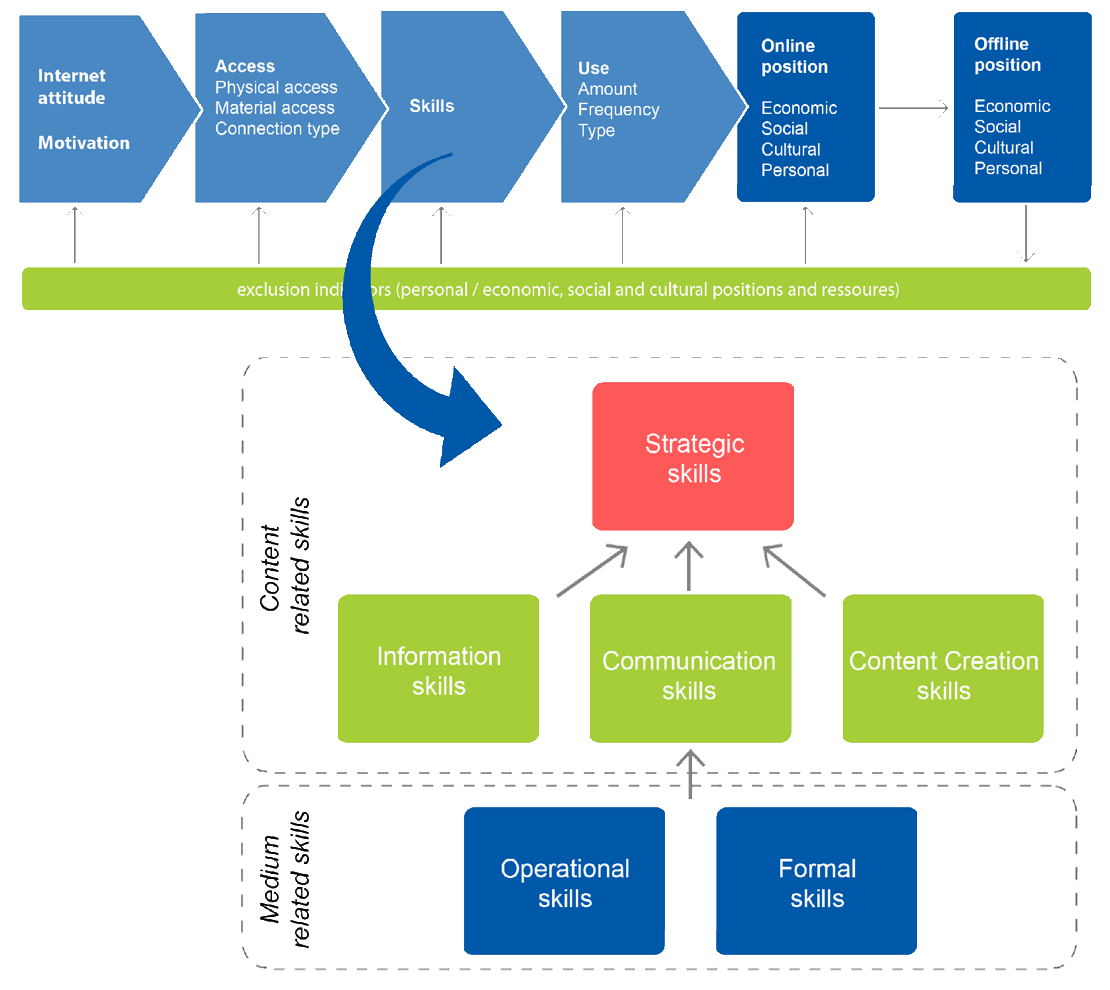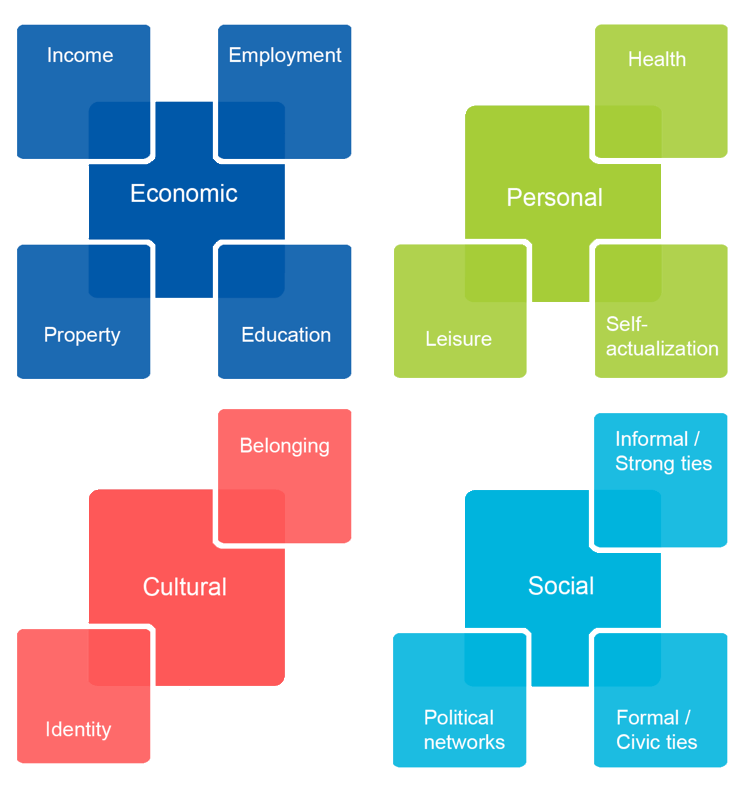UNIQUE APPROACH
To promote digital inclusion, we focus on identifying potential barriers that may emerge across a process consisting of four consecutive phases: Attitude and Motivation, Material Access, Skills, and Usage, as illustrated in light blue in the figure below (based on resources and appropriation theory by our Jan van Dijk):
 Each of these phases plays a crucial role in achieving positive outcomes and preventing negative consequences of internet use. The potential outcomes of the process serve as our starting point. These outcomes vary for each individual and can be broadly categorized into four domains:
Each of these phases plays a crucial role in achieving positive outcomes and preventing negative consequences of internet use. The potential outcomes of the process serve as our starting point. These outcomes vary for each individual and can be broadly categorized into four domains:

The models outlined above form the foundation of our approach. The phases in the first model are conditional, meaning that promoting motivation and ensuring adequate access to equipment will not automatically lead to high skill levels, versatile internet use, or numerous positive outcomes. Each phase of access depends on a variety of interconnected factors, such as gender, age, education, income, and various cultural, social, and psychological influences.
What sets us apart: In our policies and interventions, we address all phases simultaneously. This integrated approach is the key to achieving true digital inclusivity.
